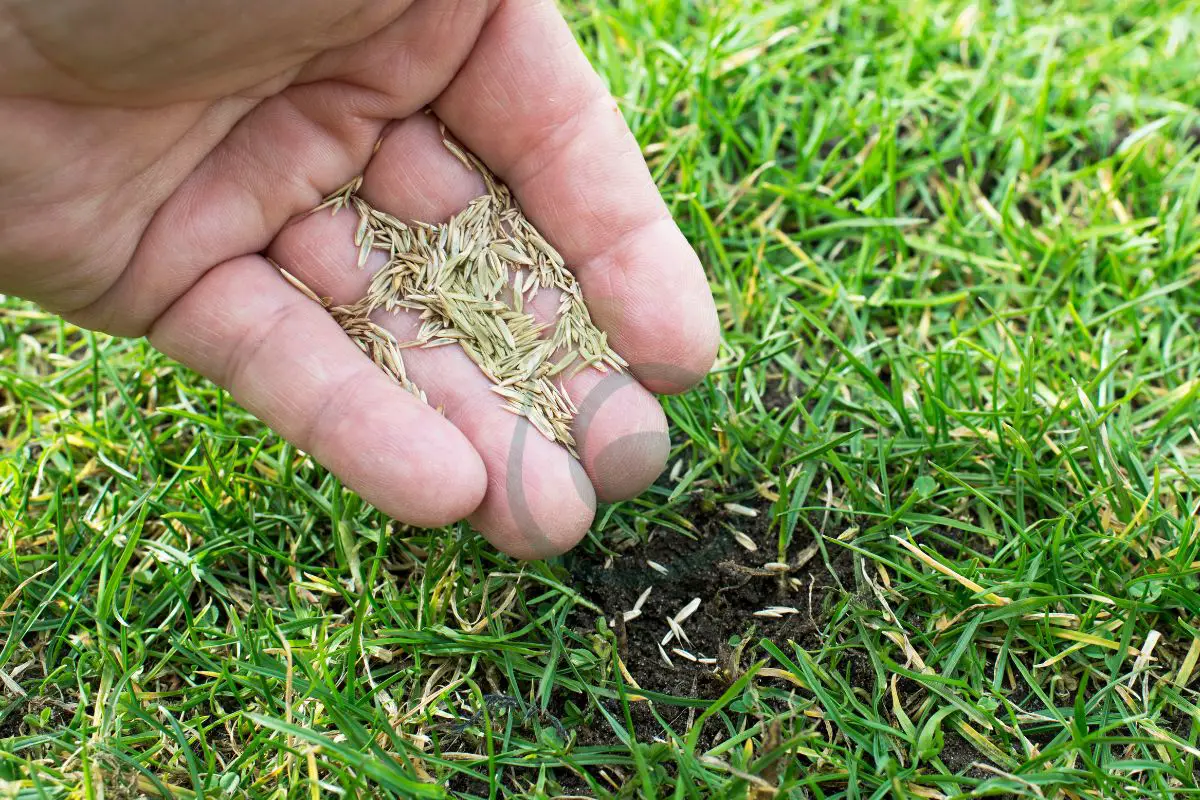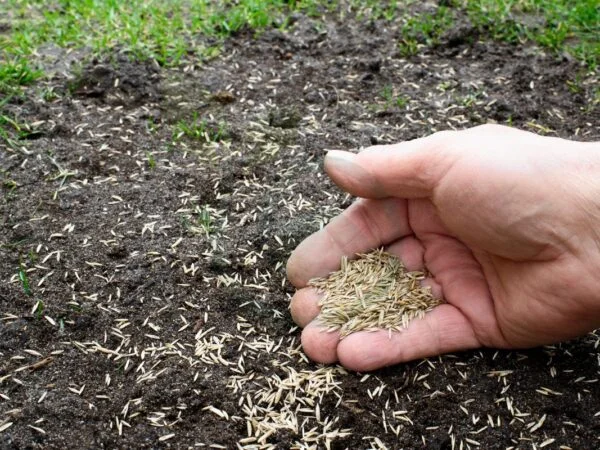Key Takeaways
- Choose the right grass seed: Select a grass seed that suits your climate and soil conditions for optimal growth.
- Prioritize quick-growing options: Consider fast-growing grass seeds if you want a lush lawn in a short amount of time.
- Implement proper planting techniques: Ensure proper soil preparation, seeding depth, and watering to enhance seed germination and growth.
- Regular lawn care is essential: Maintain your lawn by mowing, watering, and fertilizing according to the specific needs of the grass seed you've chosen.
- Tailor maintenance to your region: Follow regional recommendations for seasonal care and adjustments based on local climate conditions.
- Use recommended lawn care products: Invest in high-quality lawn care products tailored to the type of grass seed you've planted for better results.
Grass Seed Basics
Types Overview
Different grass seeds cater to specific lawn needs based on climate, soil type, and sunlight exposure. Understanding popular grass types like Kentucky Bluegrass, Tall Fescue, and Bermudagrass is crucial for decision-making. Factors such as drought tolerance, maintenance requirements, and growth habits vary among different grass seed types and soil conditions.
Growth Rates
Quick-Growing
- Quick-growing grass seeds like Perennial Ryegrass, Annual Ryegrass, and Bermudagrass are ideal for rapid lawn coverage.
- These grass seeds germinate swiftly and establish quickly, perfect for renovation projects or temporary ground cover needs.
- Fast-growing grasses may require more frequent mowing, watering, and potential over-seeding to maintain lush appearance.
Slow-Growing
- Grass seed growth rates vary significantly; understanding these rates is essential for planning lawn development.
- Kentucky Bluegrass typically takes longer to germinate but offers a fine texture and dense growth habit.
- Factors like climate, soil conditions, watering practices, and seed quality influence the growth rates of different grass types.
Benefits
Choosing the right grass seed depends on various factors such as climate, soil type, sun exposure, water availability, foot traffic,and maintenance needs. Mixing different grass seed types can maximize strengths and minimize weaknesses for a well-rounded lawn solution. Cool-season grasses like Perennial Ryegrass offer unique benefits for lawns such as shorter mowing heights and dense carpet-like appearances.
Selecting Your Seed
Climate Considerations
Select grass seed based on your region's climate for optimal growth and health. Cool-season grasses suit Northern states for lawns, while warm-season varieties thrive in the South. Transition zones require resilient options like Tall Fescue.
Soil Types
Understand soil preferences of different seed blends for successful lawn establishment. Soil composition affects nutrient availability and water retention, impacting seed growth. Test soil pH levels to determine the best-suited grass type for your soil.
Sunlight Conditions
Sunlight exposure is crucial for the success of various grass types in your lawn. Bermuda Grass thrives in full sunlight, while Fine Fescue tolerates partial shade conditions. Match sunlight requirements with actual exposure to achieve a healthy lawn.
Best Seeds for Climates
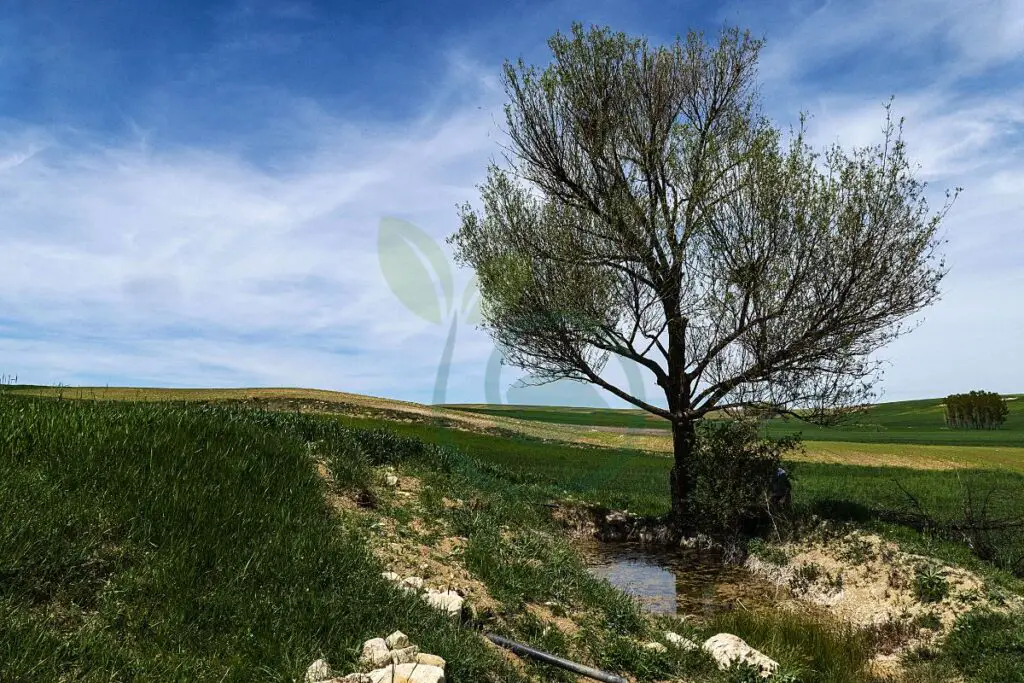
Warm Climates
Warm-season grasses like Bermuda Grass and Zoysia Grass are ideal for hot climates with abundant sunlight for lawns. These grass varieties boast exceptional heat tolerance and quick growth rates during the hotter seasons. To keep warm-climate grasses healthy and vibrant, regular watering and fertilization are crucial.
Cool Climates
In cooler regions, Kentucky Bluegrass is a top choice for lawns as it thrives in moderate temperatures year-round. While these grass types prefer cooler weather, some varieties can tolerate shaded conditions. Effective winterization practices play a key role in helping cool-climate lawns endure harsh winter conditions successfully.
Quick-Growing Options
Fast Germination
Several popular choices stand out for their rapid germination process. These seeds typically sprout within 5 to 10 days after planting.
Some of the great choices for fast germination include annual ryegrass, creeping red fescue, and Kentucky bluegrass. These grass seed choices are known for their quick establishment and ability to cover bare patches efficiently.
Coverage Speed
For those seeking rapid coverage in their lawns under full sun, selecting the right grass seed is crucial. Opting for a blend of perennial ryegrass, fine fescue, and turf-type tall fescue can provide fast coverage, filling in your lawn within weeks.
The key lies in choosing seeds with varying growth rates that complement each other. This approach ensures that while some seeds sprout quickly to cover the ground, others take root and spread out over time.
Planting Techniques

Preparation Steps
Before planting garden grass seed, it's crucial to prepare the soil properly. Begin by clearing the area of any debris or weeds. Loosen the soil using a rake or tiller to ensure good root penetration and growth.
Next, test the soil to determine its pH level and nutrient content. Adjust these factors as needed by adding compost or fertilizer. This step is essential for promoting healthy grass growth in your designated planting zone.
Consider aerating the soil if it is compacted, as this will improve water and nutrient absorption by the grass roots. Finally, make sure to level the surface evenly before sowing the seeds for consistent germination.
Sowing Methods
There are two main methods: broadcasting and drilling. Broadcasting involves spreading the seeds evenly over the prepared soil surface by hand or with a spreader.
Alternatively, drilling requires creating furrows in the soil with a seeder before placing the seeds at specific intervals within these furrows. This method ensures better seed-to-soil contact for improved germination rates.
After sowing, lightly rake over the seeded area to cover them with a thin layer of soil for protection and moisture retention. Water gently but thoroughly immediately after planting to kickstart germination.
Lawn Care Practices
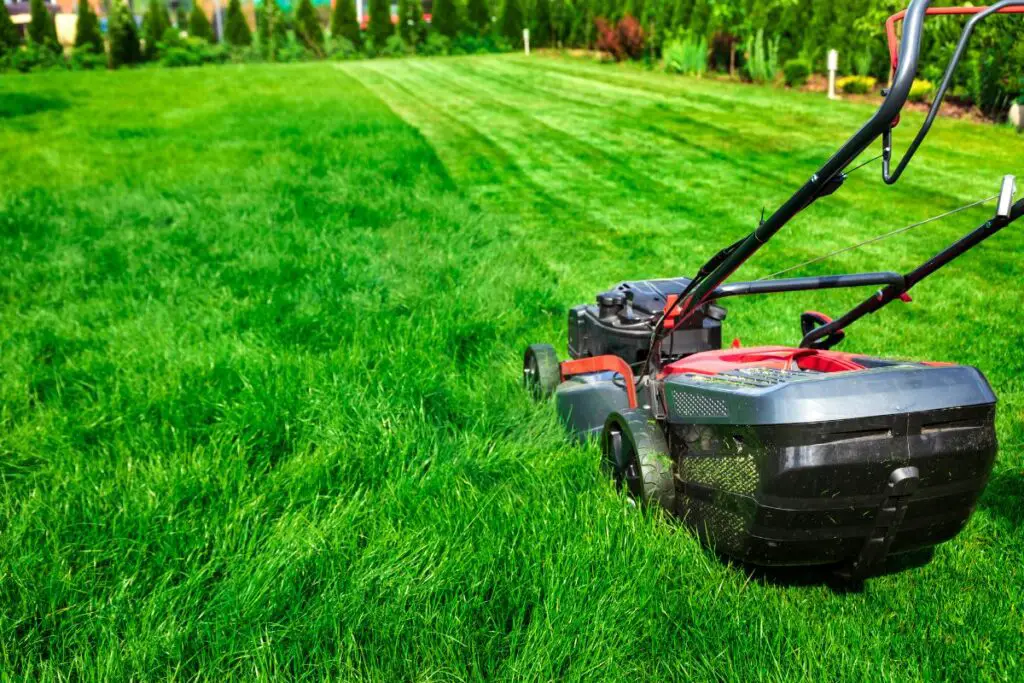
Fertilization
Fertilize your lawn in the early spring to promote healthy growth and prevent lawn diseases. Use a balanced fertilizer to ensure proper nutrient absorption for your grass.
Aim to fertilize when the soil temperature reaches around 55 degrees Fahrenheit, typically around late April or early May. Over-fertilizing can harm your lawn, so follow the instructions carefully.
Watering Schedule
Maintain a consistent watering schedule to keep your lawn areas lush and green. Water deeply but infrequently, ensuring the water reaches about 6 inches into the soil.
Water in the early morning hours to reduce evaporation loss and prevent fungal growth on your grass. Adjust watering frequency based on weather conditions and lawn size for optimal results.
Mowing Tips
Regular mowing is crucial for a well-maintained lawn. Keep your mower blades sharp to prevent tearing the grass, promoting healthier growth instead.
Adjust your mowing height based on the type of grass you have planted. For most cool-season grasses, maintain a height of around 2.5-3 inches for an ideal balance between root development and blade health.
Maintenance Over Time
Seasonal Care
Yearly, it's crucial to adjust your lawn care routine based on the changing seasons. Spring is the time for overseeding and fertilizing, promoting healthy growth. Summer requires regular watering and mowing to keep the grass lush and vibrant.
In fall, focus on aerating the soil, removing thatch, and applying a winterizing fertilizer. Winter is about minimizing foot traffic to prevent damage to dormant grass.
Problem Prevention
Regularly inspect your lawn for signs of pests or diseases throughout the year. Early detection can help prevent widespread issues that could harm your grass over time.
Ensure proper drainage to avoid waterlogging, which can lead to root rot and other problems. Proper mowing techniques, like not cutting more than one-third of the grass blade at once, can also prevent stress on your lawn.
Regional Recommendations
Northern Lawns
For Northern lawns, it's crucial to choose cold-tolerant grass seed varieties like Kentucky Bluegrass and Fescue. These grasses thrive in cooler climates, enduring harsh winters without losing their lush green color. Planting these seeds in early fall allows them to establish strong root systems before winter sets in. Consider mixing different grass types to enhance resilience against diseases and pests.
When selecting the best garden grass seed for Northern regions, opt for blends containing a mix of cool-season grasses such as Perennial Ryegrass and Fine Fescue. These varieties exhibit excellent cold tolerance and can withstand frosty temperatures common in the North. Ensure proper soil preparation by aerating and fertilizing the lawn area before seeding to promote healthy growth.
Southern Lawns
In contrast, Southern lawns require warm-season grass seed varieties that thrive in hot climates like Bermuda Grass and Zoysia Grass. These species are well-suited for the South's long summers and mild winters, staying green throughout most of the year with minimal maintenance required. Planting warm-season grass seeds during late spring or early summer ensures optimal growth under the region's climatic conditions.
Consider Bermuda Grass or Centipede Grass when choosing seeds for Southern gardens due to their heat tolerance and ability to withstand drought conditions typical of this region. These varieties offer excellent durability against high temperatures and sunlight exposure, making them ideal choices for sunny yards in the South. Remember to water newly seeded areas regularly to support germination and establishment.
Lawn Care Products
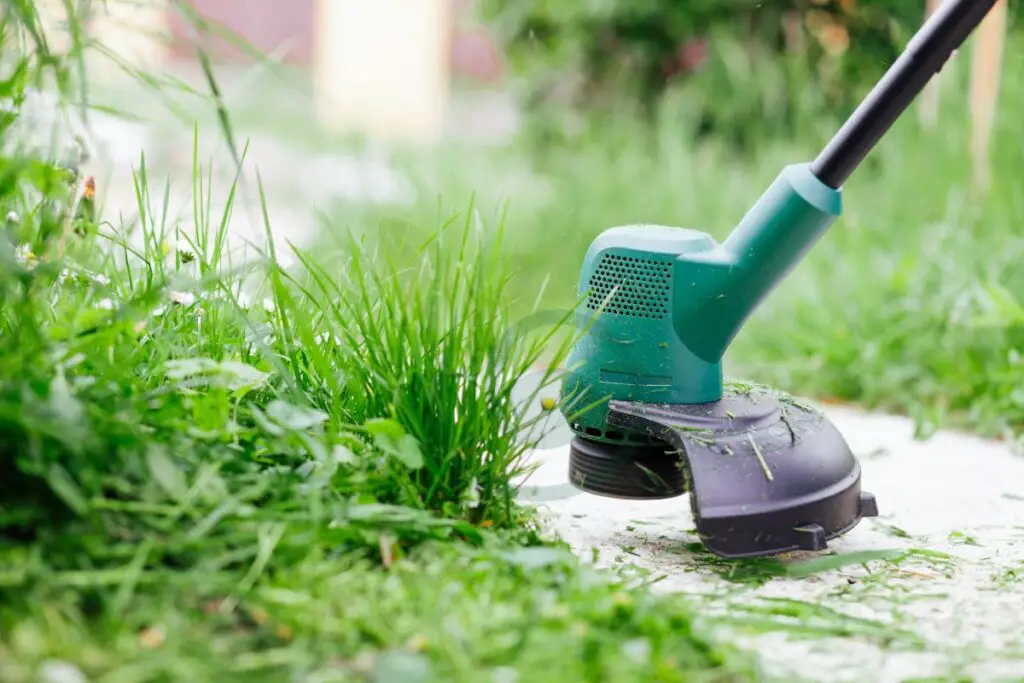
Fertilizers
Fertilizers play a crucial role in promoting healthy grass growth. They provide essential nutrients like nitrogen, phosphorus, and potassium. These nutrients help strengthen roots and improve overall grass health. Different fertilizers are available for specific types of grasses, so it's important to choose one that suits your garden's needs.
Applying fertilizer at the right time is key to maximizing its benefits. For cool-season grasses, early spring and fall are ideal times for fertilization. Warm-season grasses benefit most from fertilization during late spring or early summer when they are actively growing. Over-fertilizing can harm your lawn, so always follow the recommended application rates.
Growth Enhancers
Using growth enhancers, such as organic supplements or biostimulants, can further boost your grass's health and appearance. These products contain beneficial microorganisms that enhance nutrient uptake and promote root development. Growth enhancers can improve soil structure and increase drought tolerance in your lawn.
When choosing a growth enhancer for your garden, look for products containing beneficial bacteria like mycorrhizae or humic acids that aid in nutrient absorption by plants. These natural additives work symbiotically with the grass roots to create a healthier ecosystem below the surface.
Closing Thoughts
You've now grasped the essentials of selecting and caring for the best garden grass seed. By understanding your climate and choosing the right seed type, including grass, you're on your way to a lush lawn. Remember, quick-growing options can provide that green carpet sooner than you think. Proper planting techniques and ongoing maintenance are key to nurturing your lawn over time. Regional recommendations and quality lawn care products tailored to your needs will further enhance your grass's health.
Now, armed with this knowledge, it's time to put it into action. Head out, grab the best seed for your garden, and start transforming your lawn into a vibrant oasis. Your efforts today will yield a beautiful, thriving garden tomorrow.
Frequently Asked Questions
What are the key factors to consider when selecting the best garden grass seed?
To choose the best garden grass seed, consider factors like your climate, soil type, maintenance level, and desired appearance. Select a seed that suits your specific needs for optimal results in your garden.
How can I ensure successful growth of my grass seeds in different climates?
For successful growth in various climates, research and select grass seeds that are well-suited for your specific region. Consider factors like temperature range, sunlight exposure, and water requirements to ensure healthy growth of your grass seeds.
Are there any quick-growing options available for garden grass seeds?
Yes, there are quick-growing seed options such as annual ryegrass or fine fescue blends that offer rapid germination and establishment. These varieties can provide fast coverage for bare areas or temporary solutions while waiting for slower-growing permanent lawn types.
What are some effective planting techniques to maximize the success of my grass seeds?
Ensure proper soil preparation by removing debris and weeds before seeding. Follow recommended seeding rates and depth guidelines based on the type of seed you choose. Water consistently but avoid overwatering to promote healthy germination and growth.
How important is regular lawn care maintenance for ensuring the longevity of my garden grass seeds?
Regular lawn care practices such as mowing at appropriate heights, watering deeply but infrequently, fertilizing as needed, and addressing weed control contribute significantly to the longevity and health of your garden grass seeds. Consistent maintenance helps maintain a lush green lawn year-round.
Image Source: Paid image from CANVA

